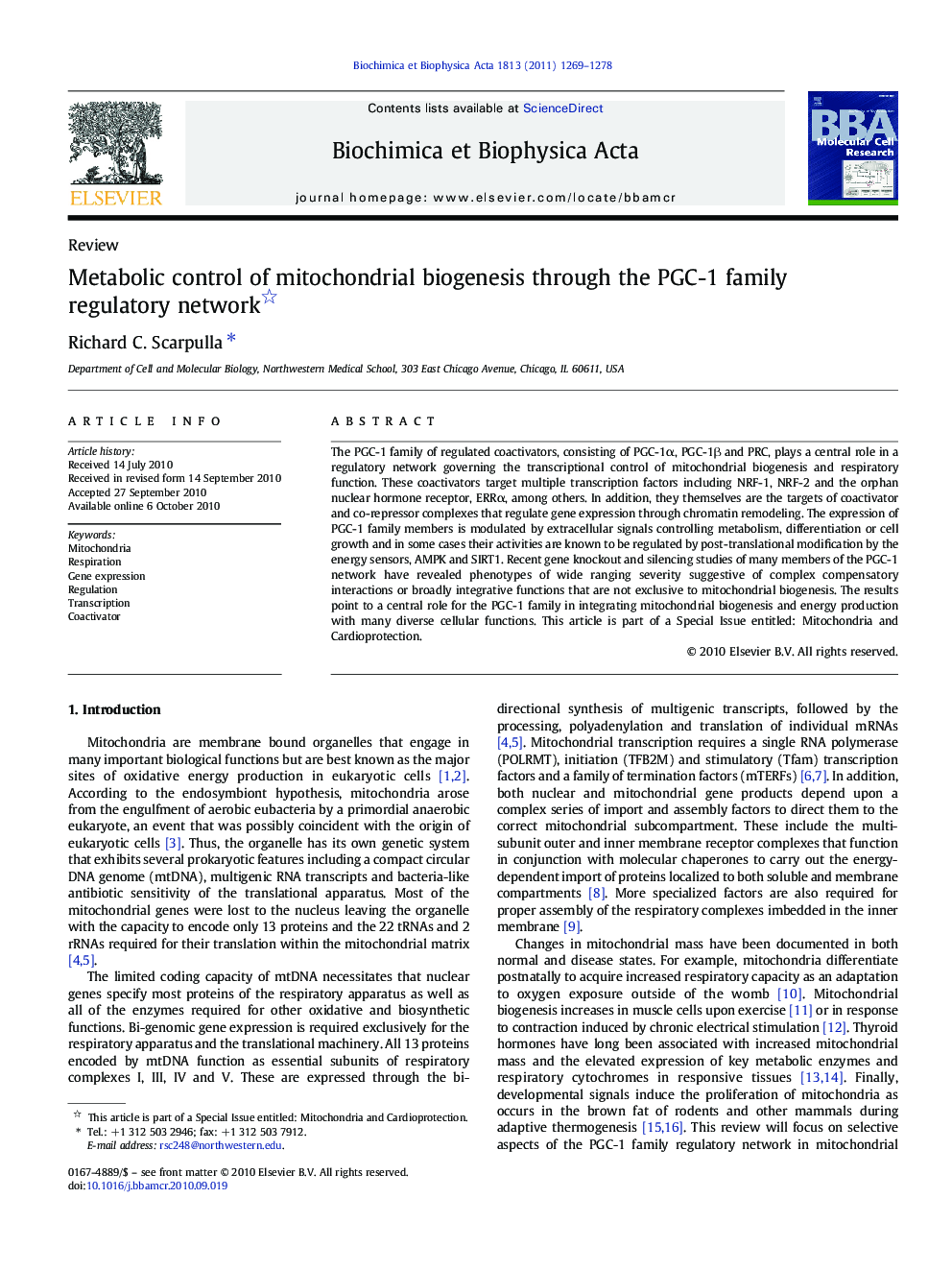| Article ID | Journal | Published Year | Pages | File Type |
|---|---|---|---|---|
| 1950825 | Biochimica et Biophysica Acta (BBA) - Molecular Cell Research | 2011 | 10 Pages |
The PGC-1 family of regulated coactivators, consisting of PGC-1α, PGC-1β and PRC, plays a central role in a regulatory network governing the transcriptional control of mitochondrial biogenesis and respiratory function. These coactivators target multiple transcription factors including NRF-1, NRF-2 and the orphan nuclear hormone receptor, ERRα, among others. In addition, they themselves are the targets of coactivator and co-repressor complexes that regulate gene expression through chromatin remodeling. The expression of PGC-1 family members is modulated by extracellular signals controlling metabolism, differentiation or cell growth and in some cases their activities are known to be regulated by post-translational modification by the energy sensors, AMPK and SIRT1. Recent gene knockout and silencing studies of many members of the PGC-1 network have revealed phenotypes of wide ranging severity suggestive of complex compensatory interactions or broadly integrative functions that are not exclusive to mitochondrial biogenesis. The results point to a central role for the PGC-1 family in integrating mitochondrial biogenesis and energy production with many diverse cellular functions. This article is part of a Special Issue entitled: Mitochondria and Cardioprotection.
Research Highlights► Respiratory chain expression requires nuclear and mitochondrial regulatory factors. ► Essential and nonessential nuclear factors contribute to respiratory chain expression. ► PGC-1α and β are important regulators of tissue-specific metabolic function. ► PRC is a growth-regulated member of the PGC-1 coactivator family. ► PRC silencing leads to a respiratory chain defect and abundant, abnormal mitochondria.
